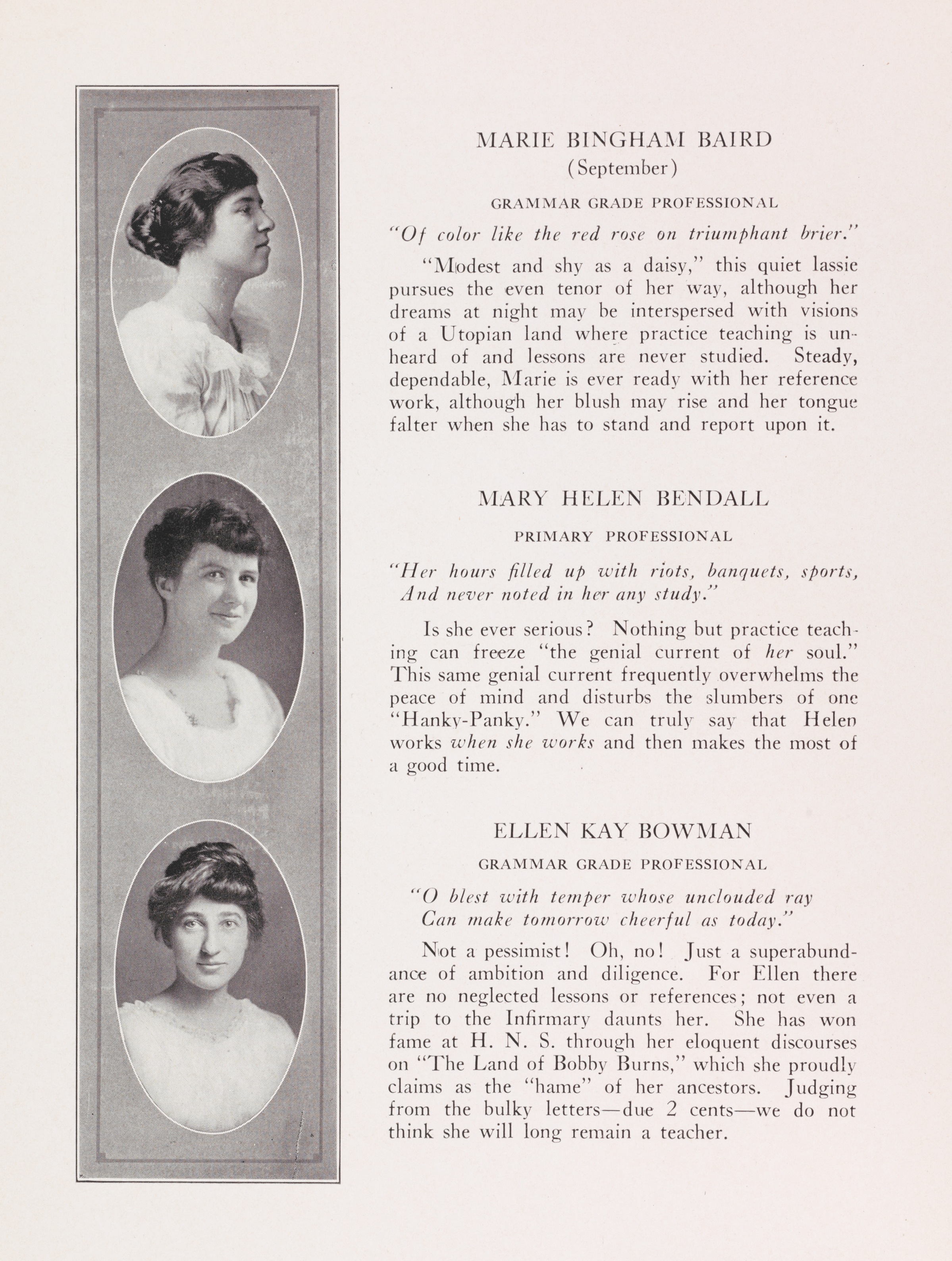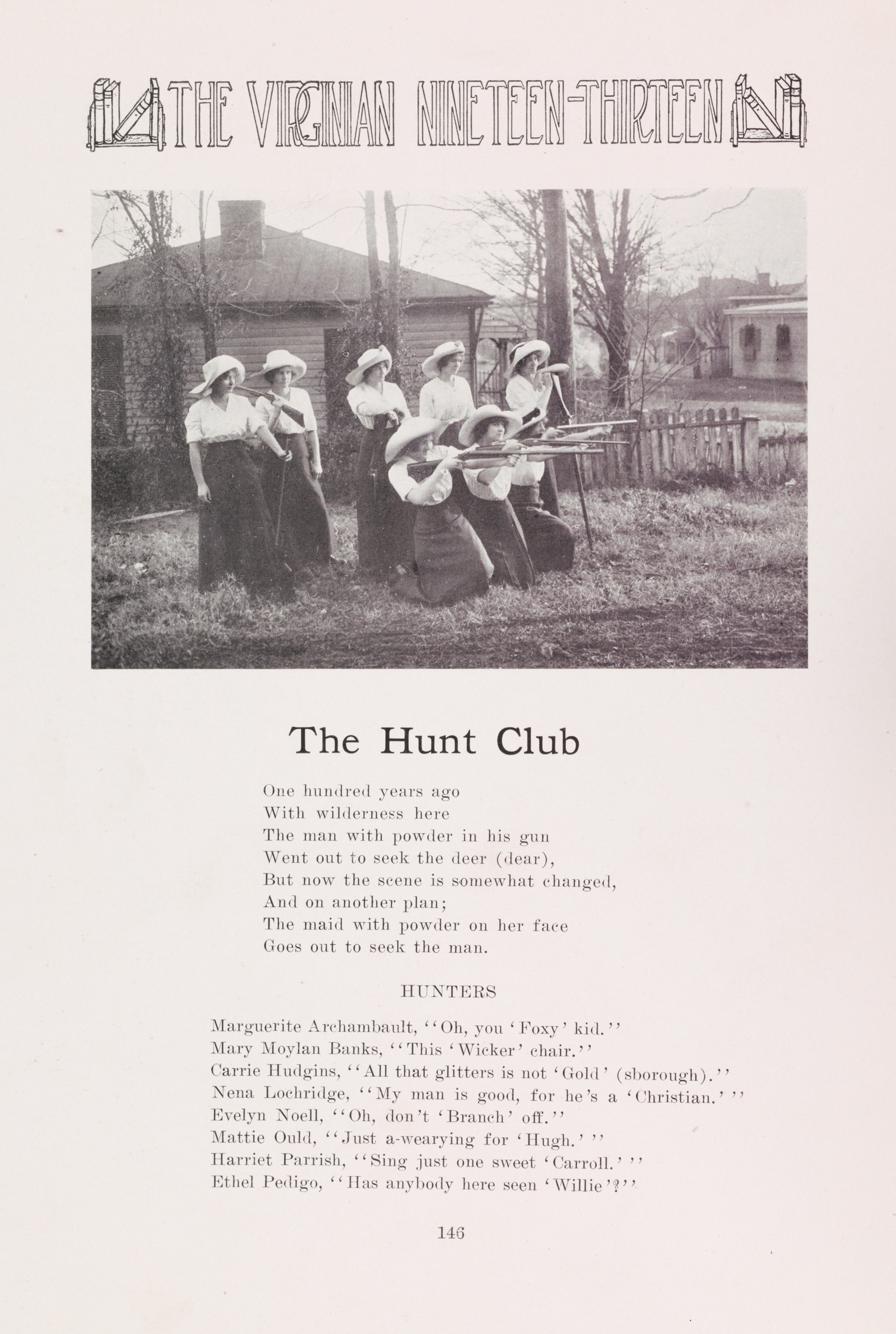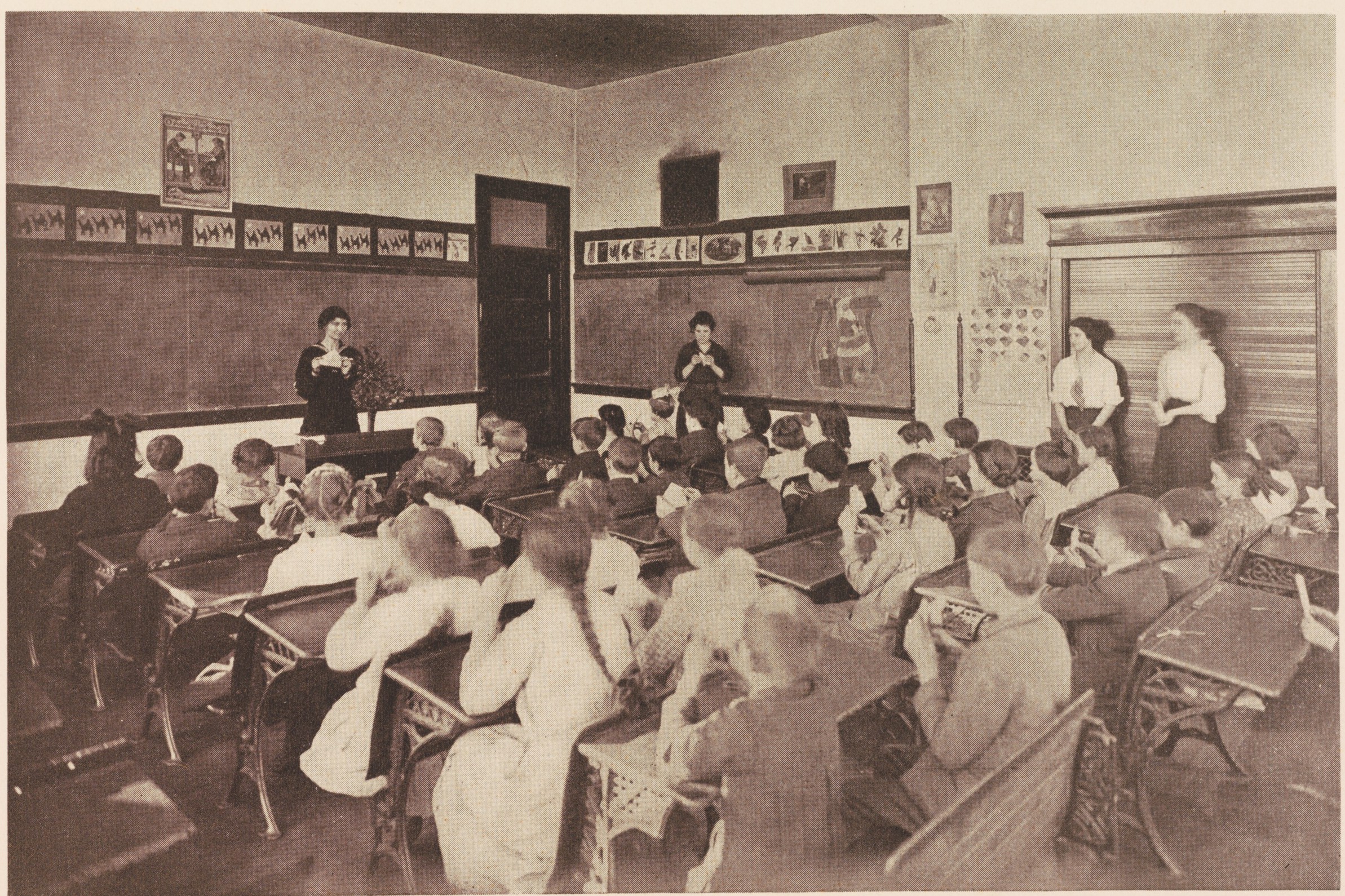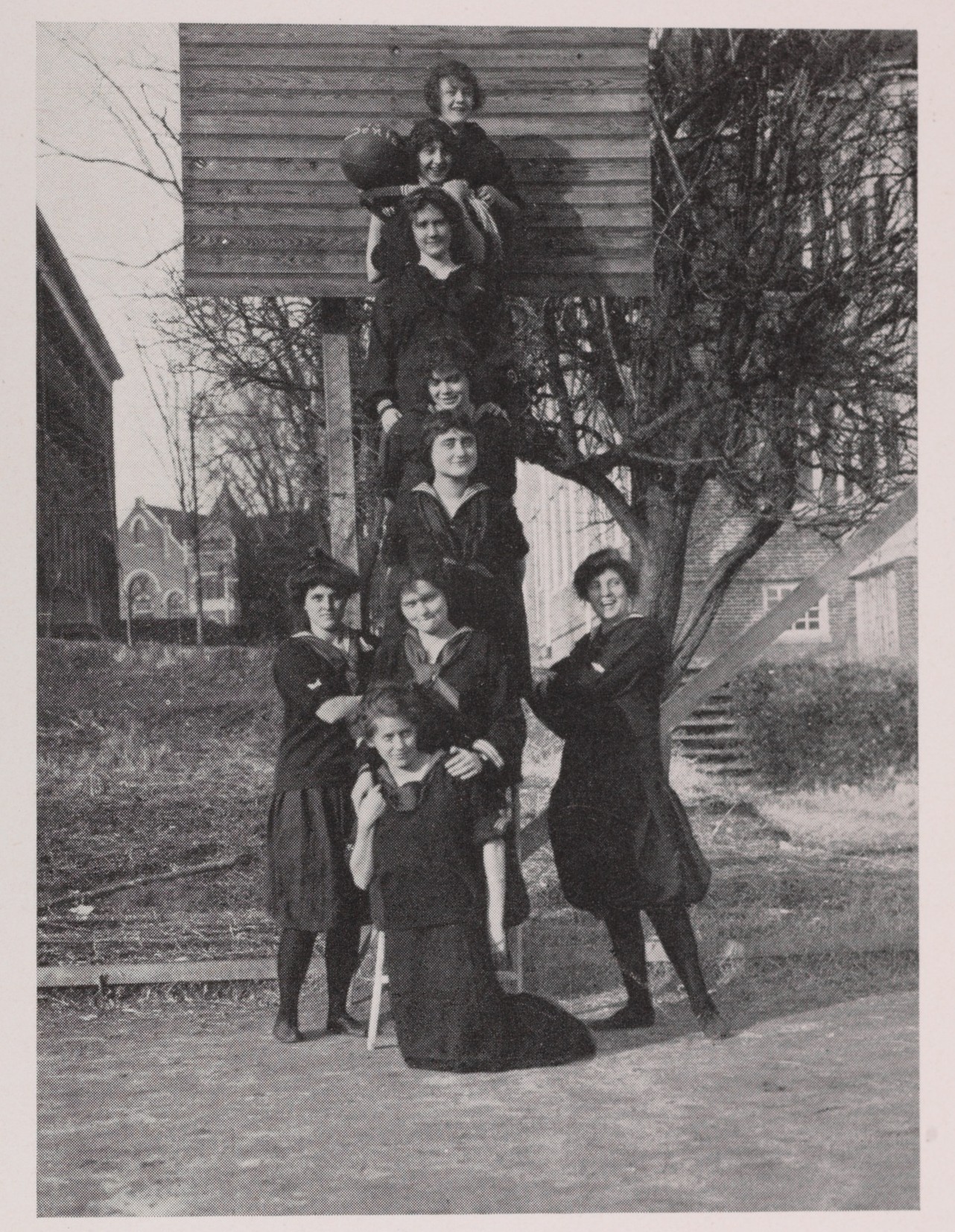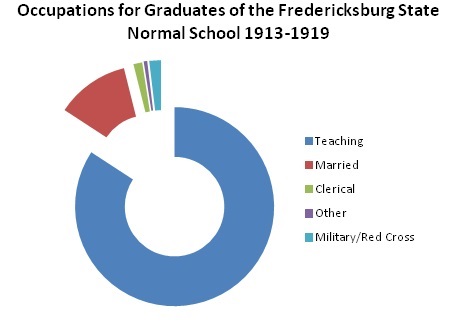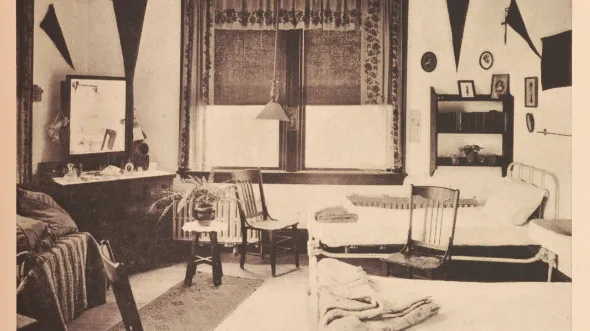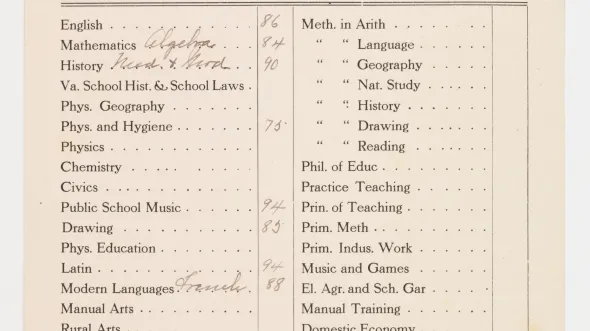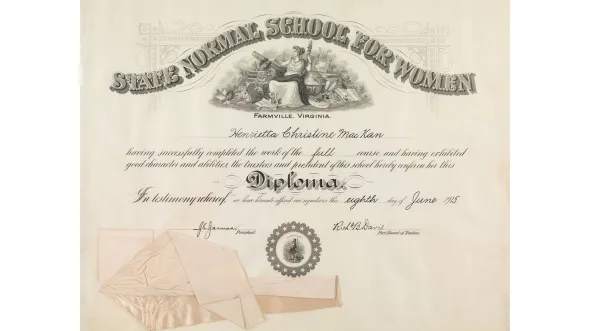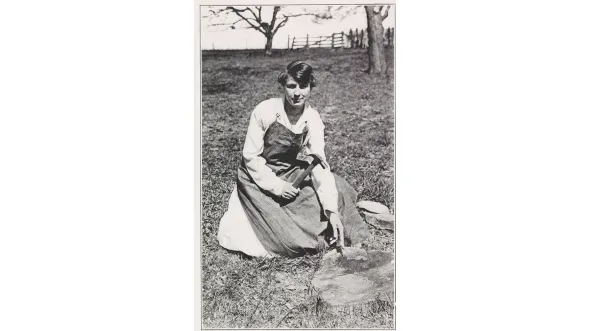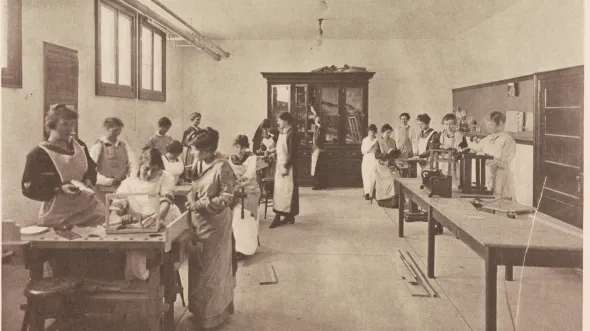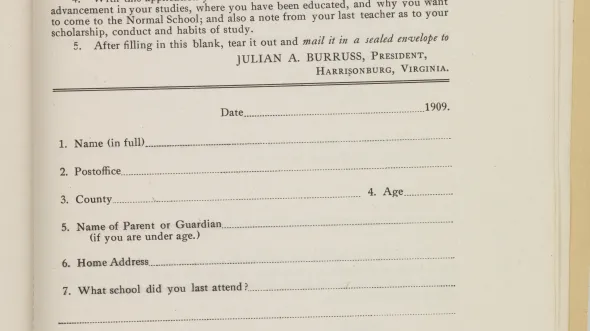Making Progress
Today women outnumber men at most colleges across the country, but higher education for women was not always a reality. By the mid-nineteenth century, the wealthiest Virginian women had several opportunities for a degree, through schools like Hollins, Randolph-Macon Women’s College, and by 1901, Sweet Briar, but these were private and costly to attend. At the turn of the century, women received an alternative. When the State Female Normal School in Farmville opened in 1884, it was Virginia’s first public institution of higher education for women.
The State Normal Schools for Women, so called because they set the norms (or standards) for teaching, were born out of a Reconstruction-era focus on public education. Virginia was creating more and more public schools across the state with a demand for trained, capable teachers to lead them. In 1902, the General Assembly passed a resolution to create additional normals to support the school system. After six years of legislative sparring, two schools were founded in Harrisonburg and Fredericksburg, joining the normal in Farmville. In 1910, the fourth was added in Radford.

